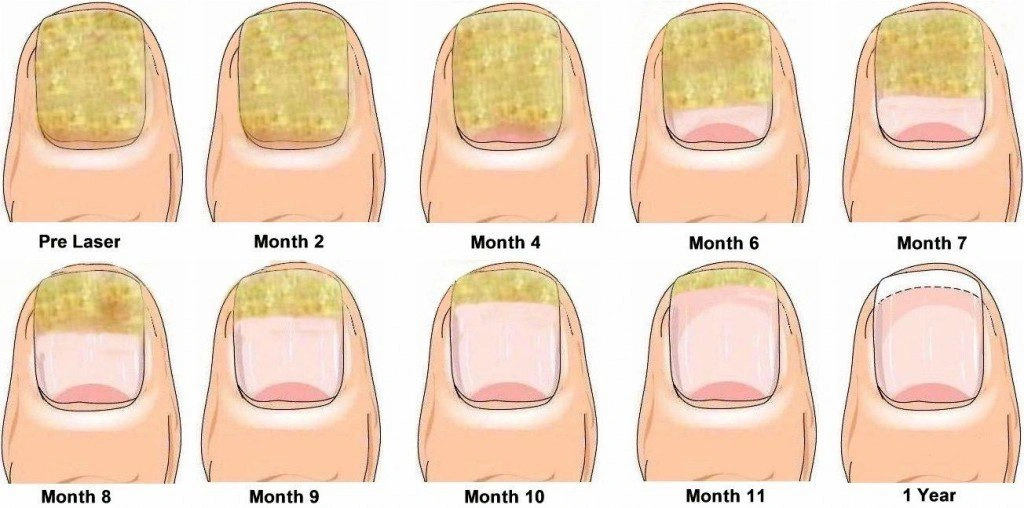Best Nail Infection Treatment Clinic in Gurgaon, Delhi NCR, India
Nail Treatment
Often the toenail or fingernail turn yellow in color and starts developing thicker than usual. This condition usually starts from the edges and then reach the middle of the nail. This is the result of a fungal infection and may cause your nail to crumble. Fungal nail infection is also called onychomycosis. It is also termed as athlete’s foot if it develops under the feet or in between the toes.
Fungal nail infection occurs due to the growth fungi inside or around the nail. The growth of fungi is supported in warm and moist surroundings. Nail fungi may develop in people with a weak immune system, diabetic, smoke frequently, have a family history of nail fungus, are in their old age or spend most of the time in wet area. It is a contagious disorder and can pass from one person to another on contact.
Signs & Symptoms

The fungal infection in nails grow slowly and steadily. It is common in toenails. However, it may be hard to notice any changes in the appearance or texture of the nail initially. Thus, it becomes important that you be aware of these visible signs before the condition gets worse.
- Visible scaling under the nail.
- Appearance of white or yellow colored streaks on the nail.
- The nail gets subtle and starts to crumble from edges.
- The nail surface starts developing white flakes.
- Yellow spots on lower side of nail.
- Separation of nail from the nail bed.
- Thickening of nail.
- Foul odor from the discolored nail.
How Fungal Infections Caused?
Fungal nail infection results as a growth of fungi. There are various fungi that can cause nail infection such as yeast and molds. But the common fungus behind nail infection is dermatophyte.
Nails get infected with fungus as a result of aging. As, with age the nails become subtle and develops crack in the nails giving way to fungi. A weak immune system and insufficient blood supply to the feet can also lead to the disorder. It is also common in people indulged in sports as they undergo excessive sweating and their feet may get damp inside the shoes.
Treatments for Fungal Nail Infection
If you have prolonged fungal infection in your nails, you must visit a doctor to diagnose the condition. You may be advised one of the following treatments to get rid of the condition.
Topical Treatments: Mild conditions of nail fungus can be treated with hygiene and use of antifungal ointments. A nail lacquer can also help by using it on the nail surface. Some widely prescribed topical medications are:
- Ciclopirox
- Naftifine
- Terbinafine
Oral Medication: When the infection turns severe, you may be prescribed antifungal pills to strengthen your immune against to fight against fungal infection. Some antifungal drugs are terbinafine and itraconazole. It helps in regeneration of healthy nail. Consumption of antifungal pills follow blood tests in every six months to ensure its not causing other problems.
Laser Treatment: If topical and oral medicines fail to show desirable effects, nail fungus is treated with laser light. The high intensity laser light is targeted to the infected area to destroy fungal growth.
Nail Removal: In case all the procedures fail to show recovery, the infected nail is removed to allow the growth of new nail. The nail is removed medically using a strong chemical solution or by a surgery.
Prevention Tips
Doesn’t matter you have been infected by a nail fungal infection in past or not, follow these prevention tips to avoid it in future:
- Dry your hands and feet after washing to avoid moisture. Later, apply moisturizer to your nails.
- Trim your fingernails and toenails regularly to keep away infections. Use a nail filer to smooth down the edges.
- If you wear shoes on a regular basis, try wearing sweat-absorbing socks. Else, change the pairs every day.
- Shop for shoes that are made of breathable materials that allow ventilation.
- If your shoes have gone old, either buy new ones or use antifungal powders in shoes to keep away infections.
- Don’t walk barefoot in damp areas such as pool side. Always wear footwear in wet places.
- During manicure and pedicure sessions, ensure that your beautician uses sterilized equipment.
- Avoid using artificial nails.
Types of Vitiligo:
- Non-segmental Vitiligo: When white patches cover both sides of the body, it is called non-segmental vitiligo. 90% of cases belong to that kind of patch problem as affected areas are more exposed to the sun.
- Segmental Vitiligo: This is not very common and occurrence rate is 8–10% only. This is less erratic in nature. It affects one side of the body.
